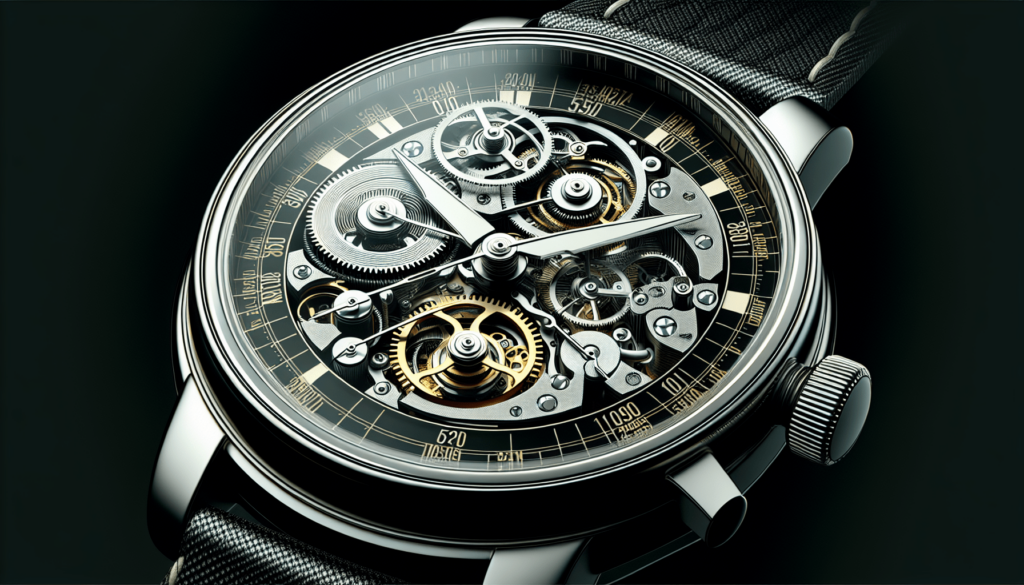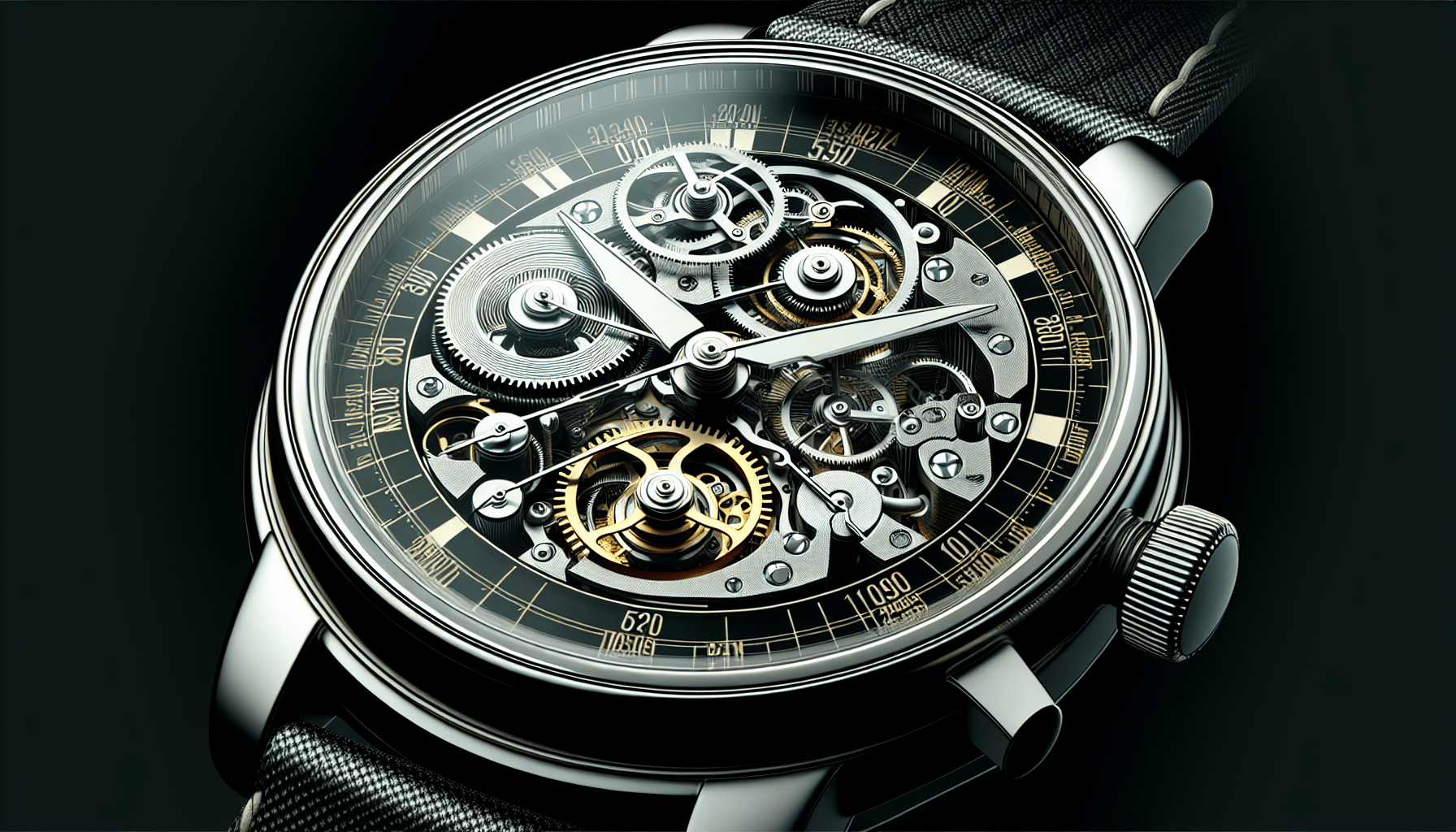Are you a fan of classy accessories and want to know more about the intricacies of a men’s wrist watch? Look no further! In this article, we will break down the various components that make up a men’s wrist watch, giving you a deeper understanding of this timeless accessory. From the dial to the bracelet, we’ll explore the fascinating anatomy of a men’s wrist watch and uncover what makes it such a stylish and functional piece. So sit back, relax, and prepare to discover the inner workings of your favorite wrist companion.
Case
The case is the outer shell of a wristwatch that houses all the internal components. It serves to protect the delicate mechanisms inside and also contributes to the overall design and aesthetics of the watch. There are several types of cases available, each with its own unique characteristics.
Types of cases
-
Round case: This is the most common shape for watch cases. It has a traditional and timeless look that is suitable for any occasion.
-
Square case: Square cases offer a more modern and bold appearance. They can add a touch of sophistication and uniqueness to your watch collection.
-
Tonneau case: Tonneau-shaped cases have a rounded rectangular shape. They offer a vintage and elegant look that is favored by many watch enthusiasts.
-
Cushion case: Cushion-shaped cases have softened corners that resemble a cushion. They have a vintage appeal and often evoke a sense of nostalgia.
Materials used for cases
Watch cases are made from various materials, each with its own properties and characteristics. The choice of material can greatly impact the durability, weight, and aesthetics of the watch.
-
Stainless steel: Stainless steel is a popular choice for watch cases due to its durability and resistance to corrosion. It is widely used in both luxury and sport watches.
-
Precious metals: Watches made from precious metals like gold or platinum exude luxury and sophistication. These materials are more expensive but offer an exquisite and timeless appearance.
-
Titanium: Titanium cases are lightweight and exceptionally strong, making them a popular choice for sport and adventure watches. They are also resistant to corrosion and hypoallergenic.
-
Ceramic: Ceramic cases are known for their scratch-resistance and durability. They have a modern and sleek appearance and are often used in high-end watches.
Case sizes
Watch cases come in various sizes to cater to different preferences and wrist sizes. It is important to choose a case size that suits your wrist comfortably and looks proportionate.
-
Small case: Small cases typically have a diameter of less than 38mm. They offer a more understated and vintage look.
-
Medium case: Medium-sized cases range from 38mm to 42mm in diameter. They are versatile and suitable for most wrist sizes and styles.
-
Large case: Large cases are generally above 42mm in diameter. They make a bold statement and are often favored by those who prefer a larger and more prominent watch.
Case shapes
A watch’s case shape greatly influences its overall design and style. Different shapes can evoke different moods and suit different occasions and outfits.
-
Round shape: Round-shaped cases are the most classic and versatile. They have a timeless appeal and can be worn for both formal and casual occasions.
-
Square/Rectangular shape: Square or rectangular cases offer a modern and geometric look. They can add a touch of sophistication and contemporary flair to your wrist.
-
Oval/Ellipse shape: Oval or ellipse-shaped cases have a unique and elegant appearance. They are less common but can make a statement and set you apart from the crowd.
-
Irregular shapes: Some watches feature unconventional and artistic case shapes, such as asymmetrical or tonneau-inspired designs. These watches are often considered avant-garde and cater to those looking for something truly unique.
Dial
The dial, also known as the face of the watch, is where the time and other relevant information are displayed. It plays a crucial role in the legibility and overall aesthetics of the watch.
Types of dials
-
Analog dial: Analog dials have hour markers, usually represented by Arabic or Roman numerals, and hands that point to the current time. They provide a classic and traditional look.
-
Digital dial: Digital dials use an electronic display to numerically show the time and other functions. They are often found in sport and digital watches, offering a modern and futuristic appearance.
-
Hybrid dial: Hybrid dials combine analog and digital elements, offering the best of both worlds. They can display additional information digitally while maintaining the elegance of traditional analog hands.
Functions on the dial
In addition to displaying the time, many watch dials feature various functions and complications that enhance the watch’s practicality and versatility.
-
Date function: The date function is one of the most common complications found on watch dials. It displays the current date, usually through a small window or sub-dial.
-
Chronograph function: Chronographs are stopwatch-like features that allow you to measure elapsed time. They often have additional sub-dials to display hours, minutes, and seconds, providing a sporty and utilitarian touch.
-
GMT function: Watches with GMT (Greenwich Mean Time) function can track two different time zones simultaneously. They usually feature an additional hand or sub-dial to display the second time zone.
-
Moon phase function: Moon phase complications display the current phase of the moon. They add a touch of elegance and craftsmanship to a watch’s dial.
Dial markers
Dial markers are the hour markers on the dial and play a critical role in ensuring accurate time reading.
-
Numerical markers: Numerical markers can be represented by Arabic or Roman numerals. They provide a traditional and vintage look, adding a sense of classic elegance to the dial.
-
Index markers: Index markers are simple lines or dots that indicate the hour positions. They offer a modern and minimalistic appearance, ensuring a clean and uncluttered dial design.
-
Diamond markers: Some luxury watches feature diamond markers, adding a touch of glamour and luxury. They catch the light beautifully and create a captivating visual effect.
-
Luminous markers: Luminous markers are coated with luminescent material, allowing them to glow in the dark. This feature enhances nighttime readability and ensures that the time can be easily read in low-light conditions.
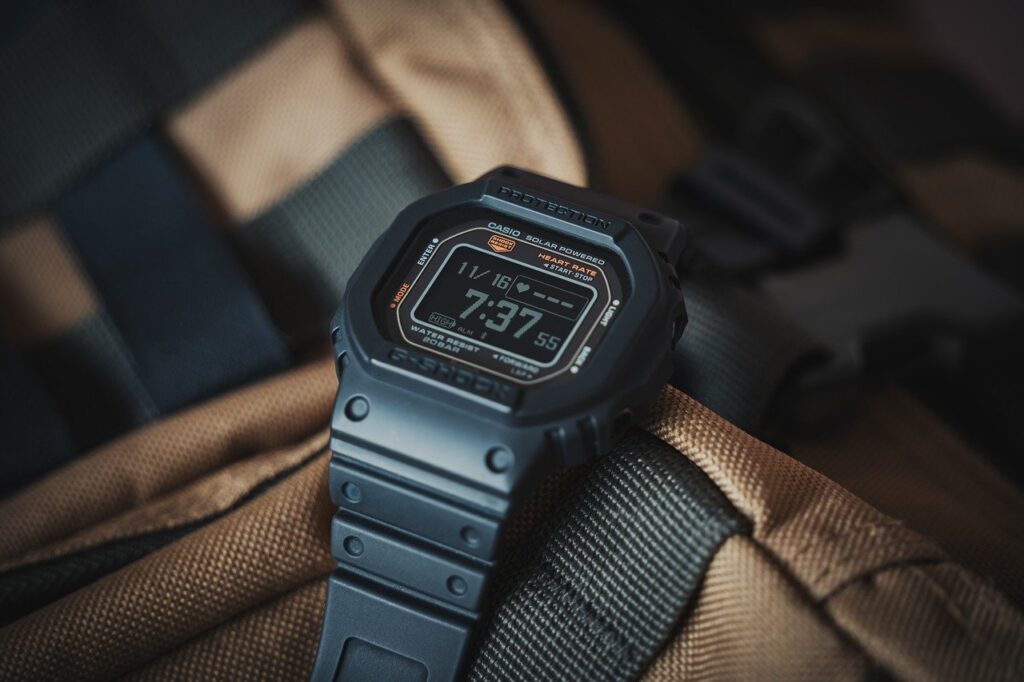
Hands
The hands of a watch are responsible for indicating the current time on the dial. They come in different styles and shapes that can greatly impact the overall look of the watch.
Types of hands
-
Hour hand: The hour hand is shorter and broader than the minute hand. It indicates the current hour on the dial.
-
Minute hand: The minute hand is longer and narrower than the hour hand. It points to the current minute on the dial.
-
Second hand: The second hand is the thinnest and longest hand on the dial. It revolves around the dial to indicate the seconds.
-
Sub-dial hands: Some watches have sub-dials that require separate hands for specific functions, such as chronograph or GMT complications. These hands are usually smaller and distinct from the main hour and minute hands.
Functions of hands
The hands of a watch serve more than just indicating the time. They can also perform additional functions and complications that enhance the watch’s practicality and functionality.
-
Date hand: Some watches have an additional hand specifically dedicated to indicating the date. It rotates around a sub-dial or the edge of the dial, pointing to the current date.
-
GMT hand: Watches with a GMT function often have an additional hand that indicates the second time zone. This hand moves independently and allows for easy tracking of two different time zones.
-
Chronograph hands: Watches with a chronograph function have multiple hands dedicated to tracking elapsed time. These can include a central seconds hand, minute hand, and hour hand on various sub-dials.
-
Luminous hands: Similar to luminous dial markers, some watch hands are coated with luminescent material to ensure visibility in low-light conditions. These hands glow in the dark, making it easier to read the time at night.
Movement
The movement of a watch refers to the mechanism that drives the watch’s hands and powers its functions. It is the heart of the watch and can greatly affect its performance and accuracy.
Types of movements
-
Mechanical movement: Mechanical movements are powered by a complex system of gears and springs. They are often regarded as the pinnacle of traditional watchmaking craftsmanship. Mechanical movements can be further categorized into manual and automatic movements.
-
Quartz movement: Quartz movements are powered by a battery and use quartz crystals to maintain accurate timekeeping. They are known for their precision, affordability, and low maintenance requirements.
Mechanical movements
-
Manual mechanical movement: Manual mechanical movements, also known as hand-wound movements, require manual winding to generate power. Winding the watch regularly is necessary to keep it running.
-
Automatic mechanical movement: Automatic mechanical movements, also called self-winding movements, harness the natural motion of the wearer’s wrist to wind the watch. They utilize a rotor that rotates with the movement of the wrist, transferring energy to the mainspring.
Quartz movements
-
Analog quartz movement: Analog quartz movements are the most common type found in watches. They tick once per second and provide precise timekeeping. They are reliable, low-maintenance, and cost-effective.
-
Digital quartz movement: Digital quartz movements use electronic displays to show the time numerically. They offer additional features like alarms, timers, and backlighting.
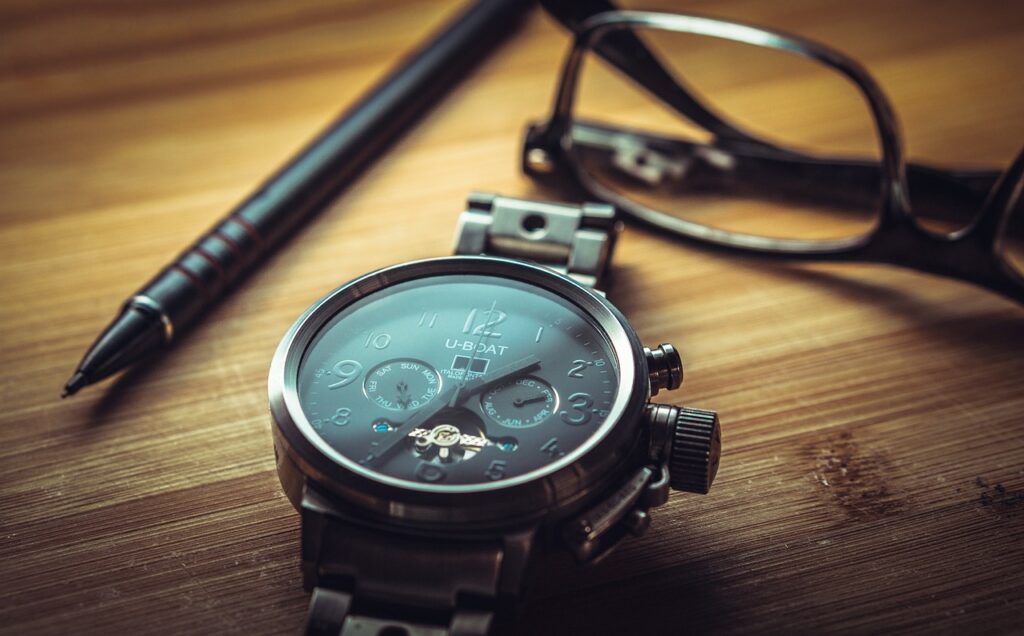
Bezel
The bezel is the ring that surrounds the watch dial. It serves both functional and aesthetic purposes, adding character and functionality to the watch.
Types of bezels
-
Fixed bezel: Fixed bezels are stationary and cannot be rotated. They are often used for decorative purposes or to hold gemstones.
-
Rotating bezel: Rotating bezels can be turned clockwise or counterclockwise. They are commonly found on diving watches and are used to measure elapsed time underwater.
Functions of bezels
-
Dive bezel: Dive bezels found on diving watches are marked with increments and enable divers to track the duration of their dives accurately. They usually rotate unidirectionally to prevent accidental adjustment.
-
Tachymeter bezel: Some watches feature a tachymeter scale on the bezel, which allows the wearer to calculate speed based on elapsed time over a known distance. These bezels are commonly found on racing-inspired watches.
-
GMT bezel: GMT bezels are commonly found on watches with GMT complications. They allow the wearer to track a second time zone by rotating the bezel to align with the GMT hand or corresponding markings.
Crown
The crown is a small knob on the side of the watch case that is used to wind the watch, set the time, and adjust other functions.
Types of crowns
-
Push-pull crown: Push-pull crowns are the most common type and are simply pulled out or pushed in to adjust the time or date. They offer ease of use and are found in most watches.
-
Screw-down crown: Screw-down crowns are screw-locked to ensure water resistance and prevent accidental adjustment. They require unscrewing before use and should be secured tightly to maintain water resistance.
Functions of crowns
-
Winding the watch: The primary function of the crown is to manually wind the watch’s mainspring in manual mechanical movements and automatic mechanical movements that allow manual winding.
-
Setting the time and date: The crown is used to set the time and date on the watch. In most watches, the crown is pulled out to various positions to adjust the hands and other functions.
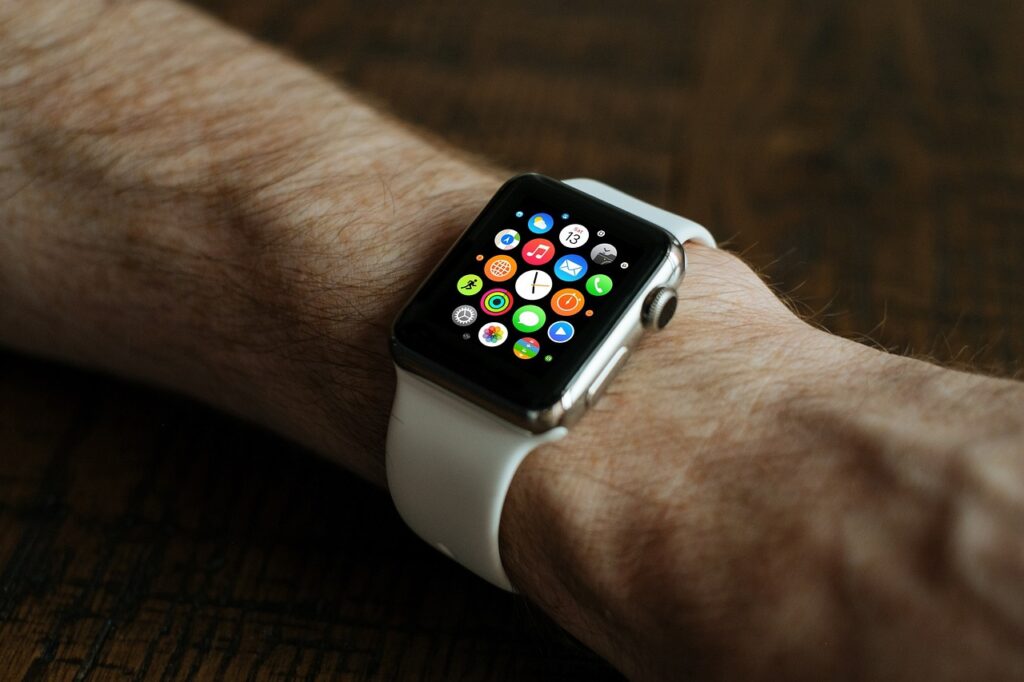
Strap/Band
The strap or band of a watch is responsible for securing the watch to the wearer’s wrist. It greatly contributes to the comfort, durability, and overall aesthetic of the timepiece.
Types of straps/bands
-
Leather strap: Leather straps offer a classic and sophisticated look. They are comfortable to wear and can age beautifully, developing a unique patina over time.
-
Metal bracelet: Metal bracelets, typically made of stainless steel or precious metals, provide a robust and timeless appearance. They are durable and suitable for both casual and formal occasions.
-
Rubber strap: Rubber straps are commonly found in sport and dive watches due to their water resistance and durability. They are also comfortable to wear and easy to clean.
-
Fabric/Nylon strap: Fabric or nylon straps are lightweight, breathable, and suitable for casual and sporty occasions. They are often associated with military or adventure-themed watches.
Materials used for straps/bands
-
Genuine leather: Genuine leather straps are made from the hide of animals such as cowhide, alligator, or ostrich. They offer a luxurious and comfortable feel.
-
Stainless steel: Stainless steel bracelets are made of interlocking metal links. They are strong, durable, and can be polished to a high shine or brushed for a more subdued look.
-
Rubber/silicone: Rubber or silicone straps are made from synthetic materials. They are water-resistant, flexible, and suitable for outdoor activities and water sports.
-
Nylon fabric: Nylon fabric straps are woven and lightweight. They are known for their durability, breathability, and versatility.
Strap/band closures
-
Buckle: The most common type of closure is a simple pin buckle that fastens the strap by inserting a prong through a hole. It is easy to use and adjustable for a comfortable fit.
-
Deployant/Deployment clasp: Deployant clasps consist of a folding mechanism that secures the watch on the wrist. They provide added security and can prolong the lifespan of the strap.
-
Velcro/Fabric strap: Some fabric or nylon straps feature a Velcro closure that allows for quick and adjustable fastening. They are often found on sport or military-style watches.
Clasp
The clasp is the mechanism used to secure the strap or bracelet of a watch around the wrist. It ensures that the watch stays in place comfortably and securely.
Types of clasps
-
Fold-over clasp: Fold-over clasps consist of two metal pieces that fold over and interlock to secure the strap. They provide a sleek and seamless look.
-
Deployment clasp: Deployment clasps have a folding mechanism that is released by pressing a button or a latch. They offer added security and convenience.
-
Buckle clasp: Buckle clasps are the most traditional and common type of clasp. They consist of a pin and a buckle that fits through the holes on the strap, securing it in place.
Functions of clasps
-
Secure closure: The primary function of a clasp is to securely hold the strap or bracelet in place, preventing the watch from slipping off the wrist.
-
Size adjustment: Many clasps allow for adjustable sizing, enabling the wearer to find the most comfortable fit on their wrist.
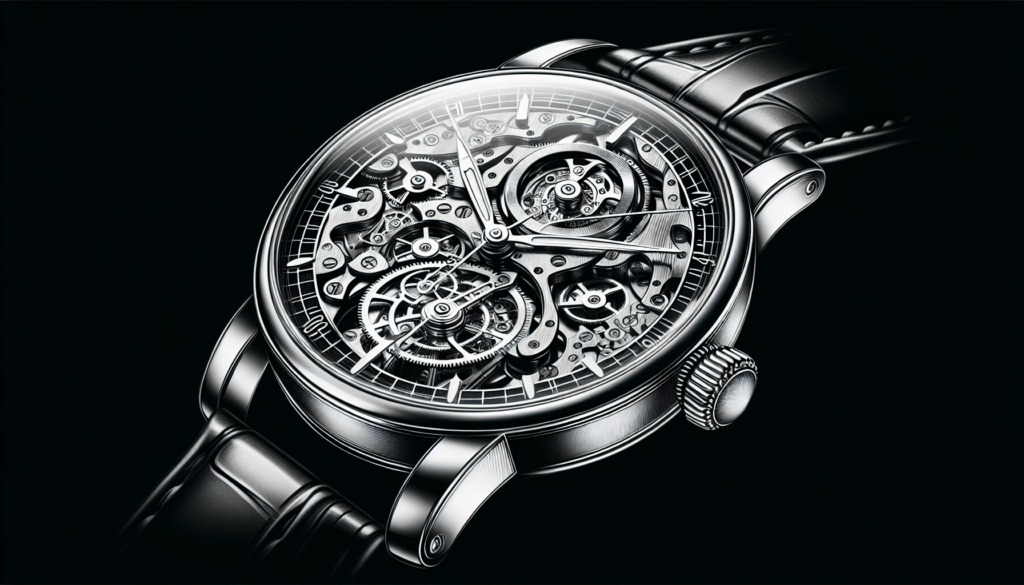
Water Resistance
Water resistance is an essential feature to consider when choosing a watch. It determines the watch’s ability to withstand water exposure without damage.
Levels of water resistance
-
Water-resistant: Watches labeled as water-resistant can withstand light splashes and rain but should not be submerged in water.
-
30 meters/3 ATM: Watches with a water resistance rating of 30 meters or 3 ATM can withstand splashes, brief immersion in water, and handwashing. They are not suitable for swimming or diving.
-
50 meters/5 ATM: Watches with a water resistance rating of 50 meters or 5 ATM are suitable for swimming, surface water sports, and light snorkeling.
-
100 meters/10 ATM: Watches with a water resistance rating of 100 meters or 10 ATM are suitable for recreational swimming, snorkeling, and water sports.
-
200 meters/20 ATM or more: Watches with a water resistance rating of 200 meters or 20 ATM, or higher, are suitable for professional diving and prolonged water immersion.
Water resistance ratings
Water resistance ratings are tested and provided by the watch manufacturer. They indicate the pressure or depth at which a watch can remain water-resistant without any leakage.
It is essential to note that water resistance can deteriorate over time due to aging gaskets or accidental damage. Regular maintenance and proper care are crucial for maintaining the water resistance of a watch.
Additional Features
In addition to the fundamental components of a watch, there are various additional features and complications that enhance the functionality and appeal of the timepiece.
Chronograph
A chronograph is a watch with a built-in stopwatch function. It allows the wearer to measure elapsed time with increased precision. Chronographs usually have additional sub-dials to display hours, minutes, and seconds.
Calendar
Watches with calendar complications can display the current date. They often have a small window or sub-dial on the dial that shows the date or day of the week. Some watches may also feature a day and month display for more advanced calendar functionalities.
Moon phase
Moon phase complications indicate the current phase of the moon as it progresses through its lunar cycle. They often consist of a disc with a rotating aperture that reveals the current moon phase on the watch dial, adding a touch of elegance and craftsmanship.
GMT
Watches with GMT complications can track multiple time zones simultaneously. They usually have an additional hand or sub-dial dedicated to displaying the time in a different time zone. GMT watches are favored by frequent travelers or individuals who regularly communicate with people in different parts of the world.
In conclusion, understanding the anatomy of a men’s wristwatch is essential for selecting the perfect timepiece that suits your style and preferences. From the case to the strap, every component plays a crucial role in both the aesthetic appeal and functionality of the watch. Consider the various types of cases, dials, hands, movements, bezels, crowns, straps/bands, clasps, water resistance levels, and additional features available to find the ideal watch that reflects your personality and meets your needs.
